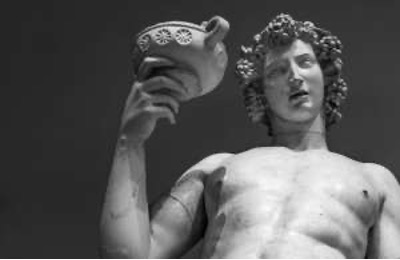Wine and epics have always had a strong connection. In this article, xtraWine wants to briefly tell you about some legends and epics that present wine as an essential element in human history.
To begin with, historically, legends about wine do not always come from the leading wine-producing countries of the modern age, such as Italy and France.
Wine has been present on the altars and tables of humankind for millennia. In fact, its longevity and its (never trivial) consumption make it an integral part of the people’s culture who have employed it in various fields.
Wine is also democratic: as the fruit of the earth, it is for the humblest and the noblest people.
xtraWine offers you a short journey through some of the most exciting myths handed down over the millennia. Let’s see them together.
The Epic of Gilgamesh
The Epic of Gilgamesh is probably the earliest collection of stories written by humankind over 4,500 years ago! It is undoubtedly the oldest and most substantial, found in Persia, today’s Iran.
One of the tales xtraWine proposes tells that upon the death of his friend Enkidu, Gilgamesh, king of Uruk, became frightened and sought a remedy for death. He was aware that it would be his turn in the future. So, he searched for the secret of eternal life that Utnapishtim would guard.
During this quest, Gilgamesh met Siduri, the woman of wine and sacred innkeeper who lived in a vineyard near the sea. Gilgamesh asked her how he could escape death. The wise woman offered him wine, advising him to abandon his vain and desperate search and prefer life’s joys.
Wine, in short, has been regarded as eternal joy as far as 4,000 years ago. Joy is preferred to the effort to escape the fear of death that is in every person’s destiny.
Noah’s Ark
Even a parable as old as Noah’s Ark has a connection to wine. In some versions of the biblical tale, Noah is believed to have produced wine on Mount Ararat, inspired by the events that occurred during his epic journey.
According to the legend that xtraWine has selected for you, a billy goat somehow managed to gain access to the Ark’s store of grapes. After consuming almost all of it, he began to run around and pester the other animals on the ship. Clearly drunk, it took some time before the animal calmed down, and Noah wanted to understand how the grapes could have caused such an effect. Such was Noah’s interest that he decided to undertake experiments to emulate the animal’s behaviour!
This led him to deal with winemaking and harvesting on Mount Ararat, a region still known today for the high quality of the grapes it produces for creating wines and liqueurs. Interestingly, Armenia has a long history of winemaking. In fact, it is home to the oldest known winery in the Areni-1 cave in the province of Vayots Dzor.
Dating back to around 4,100 B.C., the wine cellar contains everything necessary to produce basic wines: fermentation vats and grape presses. This suggests that winemaking existed even before Noah’s passage!
Dionysus
In the collective imagination, many regard the Greeks as the inventors of wine. This is because the Greeks took part quite late in the history of a product already used by other earlier cultures but with a decisive influence. This is why the Greek god of wine, Dionysus, is often depicted as a stranger from far away, covered in the skins of big cats.

Legend narrates that Zeus, among several mortal lovers, had an affair with princess Semele, daughter of Harmonia and Cadmus, king of Thebes. The love affair used to take place at night, so she could not see him. But, Hera, upon discovering Zeus’s betrayal, persuaded Semele to persuade Zeus to reveal himself, especially after finding out that the princess was pregnant.
The revelation led Semele to her death. She was burnt by lightning and the glow of Zeus’ body; he saved the child (who would become Dionysus) by sewing it to his thigh and giving birth to it after three months.
Hera, who did not particularly like Dionysus, punished him. Once he grew up, he would go so mad that he would start wandering the world without being able to return home. Dionysus succeeded in this endeavour thanks to his ability to change himself and others into vines. A power that led his disciples to worship him as the God of wine. Interestingly, Dionysus’ first love was a satyr named Ampelos, upon whose untimely death, Dionysus granted a second life in the form of a vine shoot. Today, Ampelography is the discipline that deals with the identification and classification of vine varieties, studying their biometric and morphological characteristics.
We have just read that wine and epics have always had a solid relationship. The stories and legends you have just learnt about demonstrate this!









